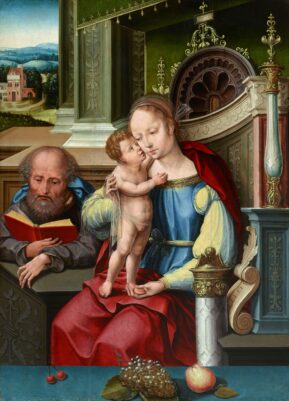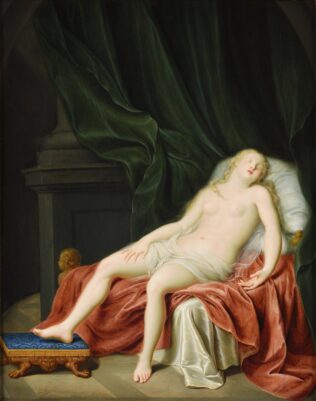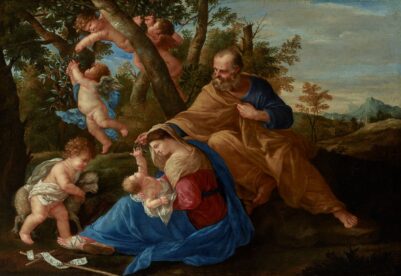
Jacob van Loo
A mother and son as Venus and Cupid
Provenance:
Sale, Angers, 25 November 1970, lot 198.
With Galerie Heim-Gairac, Paris, 1971; sale, Sotheby’s, London, 2 May 2018, lot 35.
Private collection; sale, Dorotheum, Wien, 10 November 2021, lot 64, when acquired by the present owner.
Bibliography:
D. Mandrella, Jacob van Loo 1614–1670, Paris 2011, p. 95 and p. 203, no. 146 (illustrated).
K. Bender, The Venus of the Low Countries. A topical catalogue of sculptures, reliefs, paintings, frescos, drawings, prints and illustrations of identified artists of the Low Countries, 2010, p. 80.
Catalogue Entry
Jacob van Loo was one of the greatest artists of the Dutch Golden Age. Born in Sluis, a town in the Dutch Republic, in 1614, he trained with his father, the genre painter Jan van Loo. At some point in the 1630s, van Loo moved to Amsterdam, where, in 1642, he married Anna Lengele, the sister of painter Maerten Lengele. During his first ten years in the city, van Loo mostly produced complex historical and mythological scenes, inspired by the Flemish school and the work of Van Dyck. In the 1650s, the artist started painting scenes of galanterie, featuring musicians, soldiers and young women engaged in conversations, gambling and flirting, which were a source of inspiration for similar works by Johannes Vermeer.1 Van Loo was also highly esteemed as a painter of nudes and portraits, and received important public commissions. In the autumn of 1660, the artist fled Amsterdam after fatally stabbing the wine merchant Hendrik Breda during an altercation at an inn. Sentenced to death in absentia, he escaped to Paris, where he settled with his family and continued enjoying great success. In 1663, he was admitted to the Académie and, four years later, was naturalised French. Following his death in 1670, his two sons Jean and Abraham followed in their father’s footsteps, continuing a painterly family tradition that would successfully last until the 19th century.2
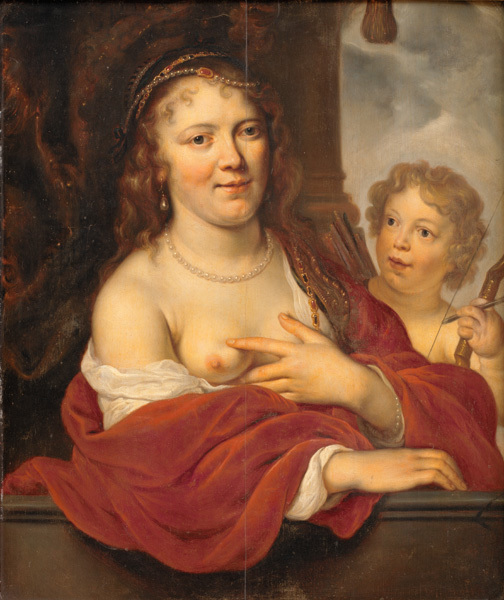
Fig. 1. Govert Flinck (attributed), A Lady and her Child as Venus and Cupid, oil on canvas, 71 x 60.5 cm., 1648, Statens Museum for Kunst, Copenhagen.
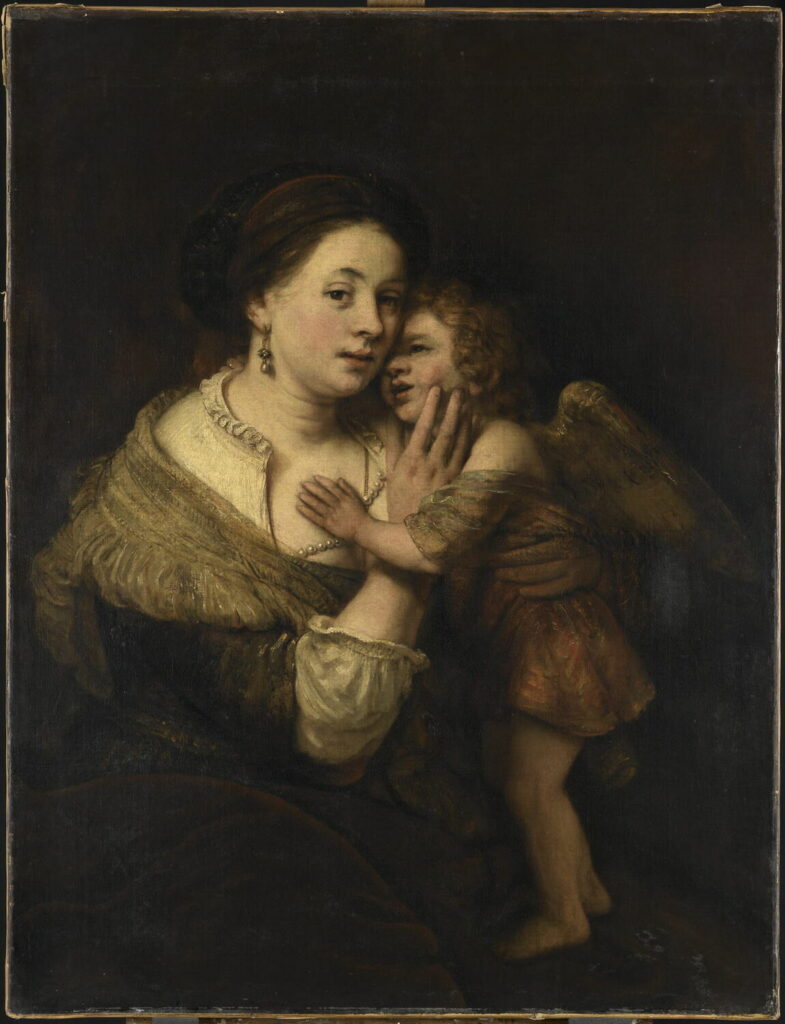
Fig. 2. Studio of Rembrandt, Vénus et l’Amour, oil on canvas, 118 x 90 cm., after 1660, Musée du Louvre, Paris.
According to David Mandrella, the author of Jacob van Loo’s catalogue raisonné, the present canvas is one of the latest known by the artist, which he painted in 1670, the year of his death.3 It shows a woman in half-length, with dark, curvy long hair embellished by a shimmering string of pearls. She wears an all’antica dark green robe, revealing her nude breasts to the viewer. Set before a landscape, she hands a golden apple to her son, a smiling child half-dressed in a classicising drape. The Greek myth The Judgement of Paris, narrating the contest between the three most beautiful goddesses of Olympus – Venus, Hera and Athena – for the prize of a golden apple addressed “to the fairest,” allows to identify the subject as Venus with her son Cupid. By the time the present work was painted, this subject had indeed become very popular among Dutch painters, including, for example, Govert Flinck (Fig. 1) and Rembrandt’s pupils (e.g. Fig. 2).
Throughout his career, van Loo treated the subject on at least two other occasions, as exemplified by his Venus and Cupid (1649, Statens Museum for Kunst, Copenhagen, Fig. 3) and An Allegory of Venus and Cupid (1654, Speed Art Museum, Kentucky, Fig. 4). If the former is an example of van Loo’s compositions with few isolated figures reminiscent of Jacob Adriaensz Backer, in the latter, the artist exploited the mythological subject to create an allegory of wealth, underlying the vanity and futility of earthly pleasures. During his Parisian years, the artist is believed to have approached mythological subjects exclusively with the purpose of disguising portraits4 – a practice probably born in Venice in the seventeenth century, which later spread to the Netherlands and France. The ambivalent fusion between these two genres is exemplified by a now lost painting by the artist, Ulysse découvrant Achille parmi les filles de Lycomède (1666), commissioned by a member of the Van Gangelt family, where the figures bear the traits of the daughters of banker Caspar van Gangelt’s and those of explorer François Caron.5 Similarly, the figure of Venus in the present work is believed to be a portrait of a real woman, possibly the wife of an élite Parisian patron who commissioned the painting,6 depicted together with their son. As per other similar van Loo’s mythological portraits, such as the Portrait de femme en Diane (1668, Fig. 5), the woman’s features are individualised and her gaze confronts the viewer, as to invite him to recognise her.7
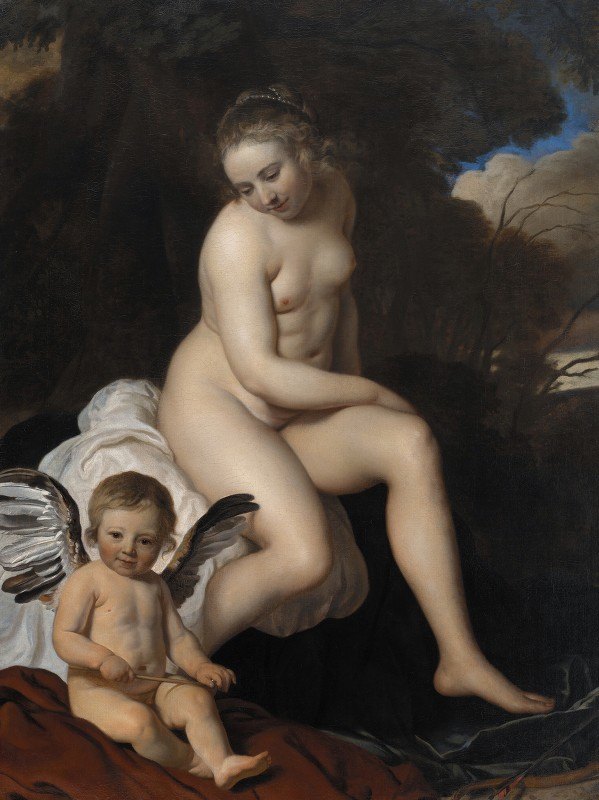
Fig. 3. Jacob van Loo, Venus and Cupid, oil on canvas, 133 x 100 cm., Statens Museum for Kunst, Copenhagen.
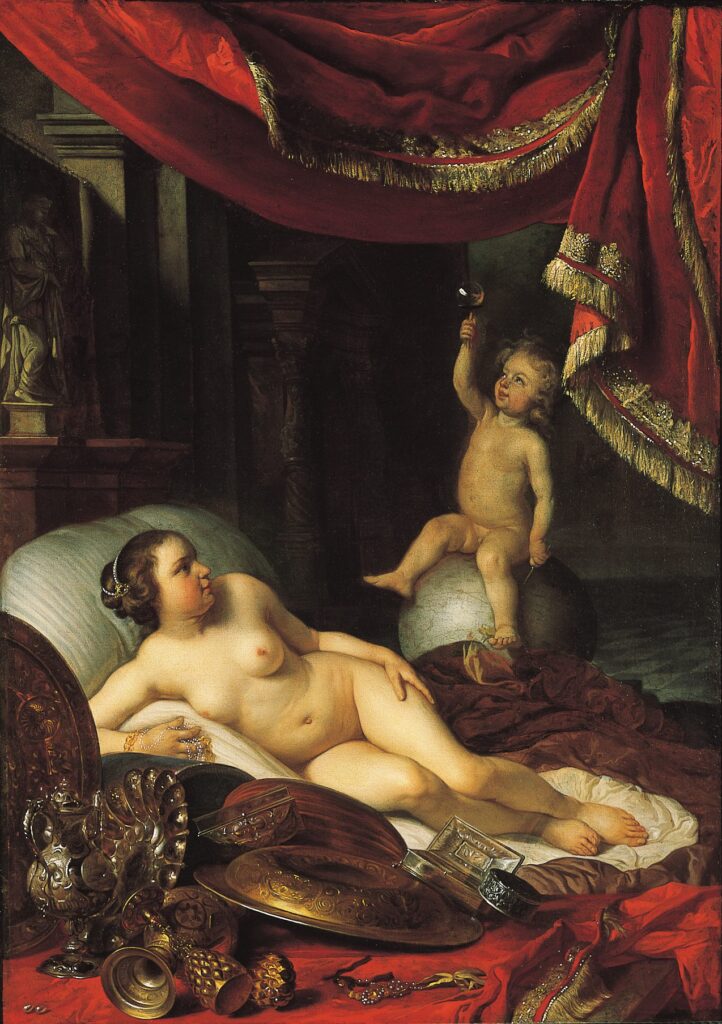
Fig. 4. Jacob van Loo, An Allegory of Venus and Cupid, oil on canvas, 121.6 × 87.6 cm., 1654, Speed Art Museum, Kentucky.
The present canvas is an exquisite example of van Loo’s refined, yet sensuous classicism of his late oeuvre. The woman’s beautifully rendered half-nude figure recalls the eroticised charge of van Loo’s works of the Amsterdam period, when he was celebrated for the exceptional quality of his nudes. As per the contemporary chronicler Arnoud Houbraken, van Loo excelled at “painting nudes, and female nudes in particular,”8 to an extent that his mythological scenes featuring naked gods and goddesses were more sought after and considered superior to those of his competitor Rembrandt. Van Loo was indeed able to develop a type of academic nude, classical yet imbued with life, that succeeded in accomplishing the ambitions and social aspirations of the élite of the time. In paintings such as the present one, van Loo excelled in achieving the so-called welstant, or the art of standing well, which allowed his aristocratic clients to distinguish themselves from inferior classes, by creating parallelisms with the classical world and its aesthetic canons.9
In the seventeenth-century Netherlands, a mythological subject such as Venus and Cupid was often used to justify the depiction of erotic images, which would have otherwise resulted inappropriate. For a considerate part of the aristocratic and even burgher élite, a certain amount of erotic playfulness was permitted in both painting and literature,10 with Venus and Cupid being particularly appropriate subjects for love poems and marriage-related paintings. Works such as the present one had voyeuristic implications and aimed at arousing the senses: by having the woman looking out at the viewer – which, in this case, would probably be her husband – van Loo visualised the contemporary belief that the gaze of a woman could send out a powerful force that entered through the eyes of the beloved inflaming his heart. In accordance with the sixteenth-century Italian tradition, contemplating images of beautiful nudes in the privacy of one’s own room was believed to increase the chances of generating beautiful and healthy offspring, such as the present handsome child.11

Fig. 5. Jacob van Loo, Portrait de femme en Diane, oil on canvas, 48.5 x 41.5 cm., 1668, Location unknown.
1 Together with Gerbrand van den Eeckhout, Jacob van Loo is considered the creator of the “conversation piece”. 2 For recent, monographic publication on Jacob van Loo, see J. Noorman, Art, Honor and Success in the Dutch Republic: The Life and Career of Jacob van Loo, (Amsterdam: Amsterdam University Press, Amsterdam) and D. Mandrella, Jacob van Loo 1614–1670, (Paris: Arthena, 2011), 3 D. Mandrella, Jacob van Loo 1614–1670, (Paris: Arthena, 2011), p. 95. 4 Ibid., p. 5 Ibid., p. 40. 6 Ibid., p. 203. For a detailed study on van Loo’s patronage, see “Chapter 3 - Clientele,” in J. Noorman, Art, Honor and Success. 7 Ibid., p. 47. 8 A. Houbraken, De groote schouburgh der Nederlantsche konstschilders en schilderessen, Amsterdam, 1718–21 (rev. ed., The Hague 1753; reprinted, Amsterdam 1980), Vol. 3, p. 172. 9 For one of the first studies on the spread of Classical subjects and aesthetic in the Netherlands, see E. F. von Monroy, Embleme und Emblembücher in den Niederlanden, 1560-1630: eine Geschichte der Wandlungen ihres Illustrationsstils, (Utrecht: Dekker & Gumbert, 1964). 10 See, for example, Bredero’s The Great Fountain of Love and Hooft’s Emblemata Amatoria. 11 E. J. Sluijter, Rembrandt and the Female Nude, (Amsterdam: Amsterdam University Press, 2006), pp. 151-163.
Condition:
The canvas has been relined. The paint surface is stable, with no major damages visible to the naked eye, except for two small unrestored losses, one in the top left corner, one in the bottom right corner. There is one half inch scratch above the child’s head. Inspection under ultraviolet light reveals some restoration at the top left, top right and bottom right margins, and an old restored damage under Venus’ right hand. The canvas was recently re-stretched and revarnished.
